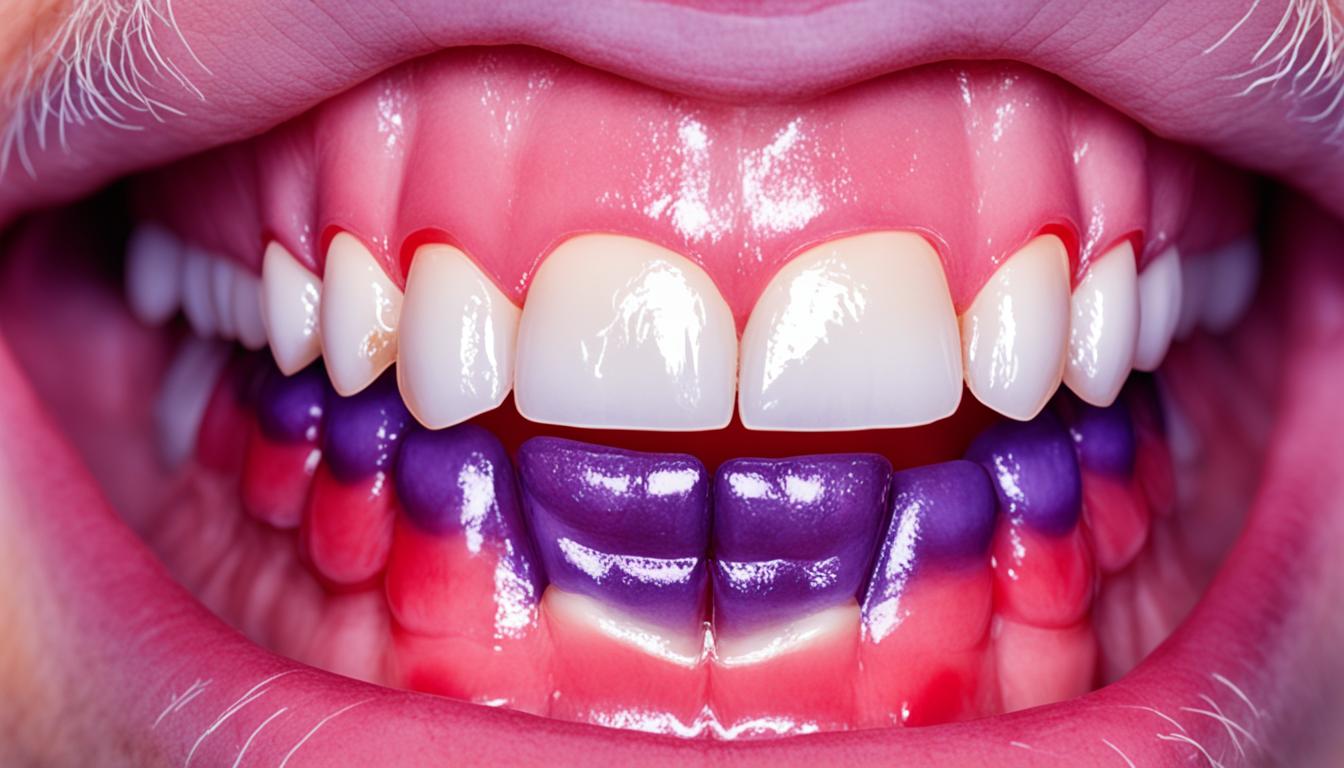Periodontal disease, sometimes called periodontitis or gum disease, is a common issue. It causes inflammation around the teeth. This disease damages the periodontium, which is the area that includes the gums and the bone holding the teeth.
The main problem is plaque, that sticky bacteria layer on the teeth. If plaque hardens, it becomes tartar. This leads to gum inflammation and infection.
As periodontal disease gets worse, gums may swell and bleed. This can lead to bad breath and moving teeth. If not treated, it can cause teeth to come out. Dentists find periodontitis by checking the mouth for pocket depths and looking at the gums.
It’s crucial to catch and treat this disease early to avoid more damage to the mouth.
Key Takeaways:
- Periodontal disease affects tissues around the teeth and is a chronic condition.
- Plaque is its main cause, leading to gum inflammation and infections.
- Early diagnosis and treatment are crucial to prevent further damage to the oral tissues.
- If left untreated, periodontal disease can result in tooth loss.
- Stem cell therapy might be a future way to treat this disease.
Stem Cell Therapy for Periodontal Regeneration
Stem cell therapy is becoming a key player in fixing gum issues like periodontal disease. Especially, mesenchymal stem cells (MSCs) from dental areas are showing real potential. They can change into different cells like ones that build teeth’s roots and structures.
Current research compares using stem cells to common treatments. Patients getting stem cell treatment showed better attachment of tissue, less deep pockets, and more bone formed.
We need more top-quality tests to be sure stem cell treatments are safe and effective. Luckily, new tools in tissue building, such as better scaffolds and growth factors, are moving this field forward.
The Potential of Mesenchymal Stem Cells
MSCs have become a hot topic for gum repair. Specifically, dental MSCs play an important role in fixing gum tissue. They come from parts of teeth like the core and the tissue that holds teeth in place.
Research shows these dental stem cells do a great job at fixing gums by making new tissue, root material, and bone. They also help lower the harmful response our bodies have to this gum disease.
- Dental stem cells are easy to get and use for gum repair.
- MSCs from dental areas might work better than elsewhere because they naturally fit gum repair needs very well.
Advancements in Tissue Engineering
Tissue engineering is essential for making good stem cell treatments for gum repair. When you combine the right stem cells with materials like scaffolds and growth factors, you can boost gum healing.
Scaffolds are like three-dimensional platforms that help stem cells grow and change into the right kind of cells. These help in keeping new structures strong and in their right place.
Growth factors, like bone morphogenetic proteins (BMPs) and platelet-derived growth factor (PDGF), push cells to grow, move, and change. This is key in making new gum tissue.
| Advancements in Tissue Engineering for Periodontal Regeneration |
|---|
| Development of bioactive scaffolds |
| Enhanced delivery systems for growth factors |
| Integration of stem cells and scaffolds for optimal tissue regeneration |
With these new steps in building tissues and the power of stem cells, gum regeneration is looking bright.
Conclusion
Periodontal disease, often called gum disease, is an inflammatory condition around teeth. It can cause serious problems if not treated. But, stem cell therapy offers hope for those with this disease.
Stem cell therapy is doing well in helping gums heal. It’s seeing good results. This includes better attachment of teeth, less depth in pockets, and new bone growth. Even though more trials are needed, the start looks good.
New tissue engineering steps are also helping out. They make things like scaffolds and growth factors. These new ways are changing the game. They offer more chances for stem cell therapy to work on gum disease.
The progress in stem cell therapy and tissue engineering is exciting. It could really change how we treat gum disease. And for patients, this could mean better results in fighting periodontal disease and gum problems.

